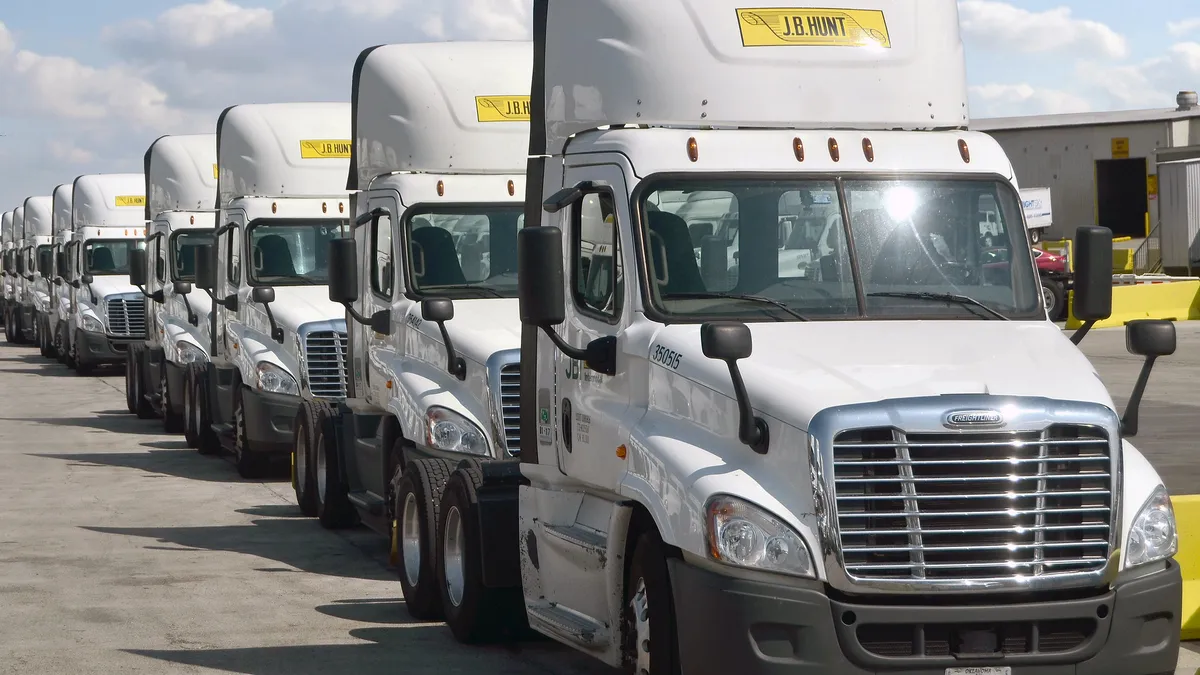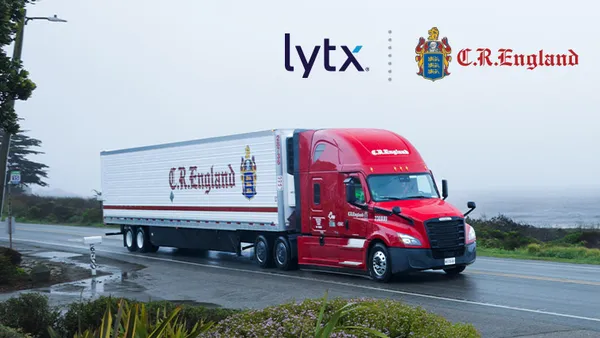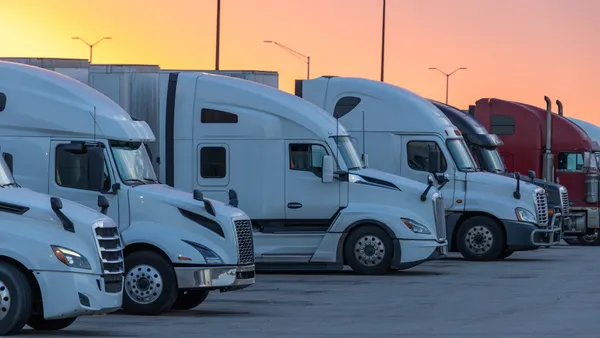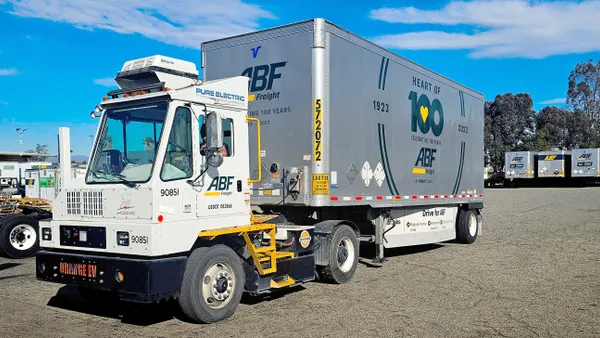Dive Brief:
- Rising logistics costs and challenges with final mile cast a shadow on supply chain leaders' otherwise optimistic outlook, according to a GlobalTranz survey of 200 U.S.-based supply chain managers in early March.
- Nearly 70% of respondents said they had trouble finding transportation partners to meet growing demand for final-mile delivery, although 91% said their third-party providers "will effectively meet their needs in 2021."
- In the study, 37% of survey respondents said they expect to continue managing rising transportation costs in 2021.
Dive Insight:
Fleets need to make the risk-reward calculus for final mile before delving into the segment. E-commerce's growth provides plenty of business opportunities in the last mile to transport firms. In the GlobalTranz survey, 84% of respondents said they have seen increased demand for final-mile services.
But the final leg of the supply chain is resource intensive, often low density and requires a high level of customer service.
Schneider was unable to make its First to Final Mile service meet operating targets and financial expectations. In 2019, it shuttered the unit, which handled big and bulky home deliveries.
Other transport firms see opportunity and shipper demand in the final mile. J.B. Hunt is banking on last-mile delivery execution and white-glove services to be differentiators. The firm has purchased four last-mile providers since 2017.
Forward Air is also going the M&A route for expansion of its final mile. Last year, it announced plans to acquire the assets of CLW Delivery, a final-mile company, for $5.5 million. That followed two last-mile-related acquisitions in 2019.
"Forward Final Mile has experienced a period of hypergrowth, expanding from 8 operating locations into 110 in under two years," a news release from the company stated.
In addition to finding final mile partners, more than one-third of shippers also listed rising transportation costs as a headwind to manage. Freight spending was up 17% YoY in February, Cass reported.
The spot market is still ticking up, and contracts are locked in at higher rates as shippers prioritize space guarantees over low cost at all cost. More freight is also shifting to the spot market, where rates are up 130% over last year. Typically, about 85% of freight travels via spot, according to DAT.
"Starting in June of last year, spot volumes began to accelerate as a percentage of total volume. By the end of 2020, the spit was more like 75/25," the analytics firm said in a LinkedIn post.
The shift to spot, to accommodate more demand, is dragging on shipper margins.
General Mills said on its most recent earnings call that increased volume drove the manufacturer to secure lanes on the spot market, which led to higher logistics cost.
Lamb Weston reported transport cost increases as it relied on spot more than usual, rather than its usual methods of contract trucking and rail.














